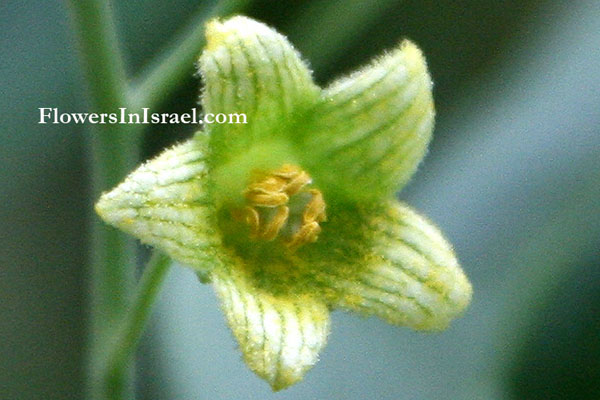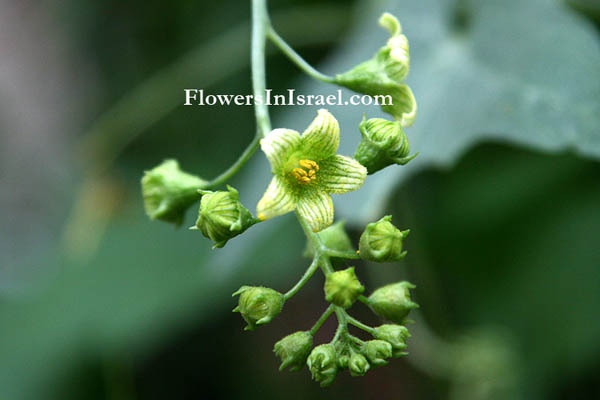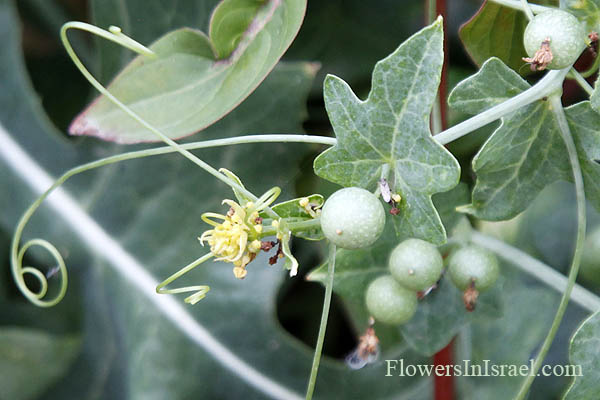Hebrew: דלעת-נחש מצויה, Arabic: بطيخ الحية, عنب الحية
| Scientific name: | Bryonia cretica L. | |
| Synonym name: | Bryonia multiflora sensu Boiss.p.p. et auct. non Boiss. et Heldr. | |
| Common name: | Cretan Bryony | |
| Hebrew name: | דלעת-נחש מצויה | |
| Arabic name: | بطيخ الحية, عنب الحية | |
| Plant Family: | Cucurbitaceae, Gourd family, דלועיים |

|
| Life form: | hemicryptophyte, vine | |
| Stems: | Rough-haired stalks, up to 4 m long | |
| Leaves: | Alternate,palmately lobed leaves | |
| Flowers: | Dioecious, greenish-white and grouped in long-stemmed clusters, while the somewhat smaller, light green female plants sit in tufts resembling calyces in the leaf axils | |
| Fruits / pods: | Berries, spherical | |
| Flowering Period: | March, April, May | |
| Habitat: | Scrub and woodland | |
| Distribution: | Mediterranean Woodlands and Shrublands, Semi-steppe shrublands, Montane vegetation of Mt. Hermon | |
| Chorotype: | Mediterranean | |
| Summer shedding: | Ephemeral |

Derivation of the botanical name: Bryonia, according to Pliny (Book XXIII 21-28) the name Bryonia stems from the Greek bryo and bryéin, which mean «to grow» or «to sprout lushly» and which refer to the stalks that sprout rapidly and numerously from the root stock. cretica, from the island of Crete.
All species of Bryonia are pollinated by pollen- and nectar-gathering bees, and the fruits are berries that are dispersed by birds. 
|